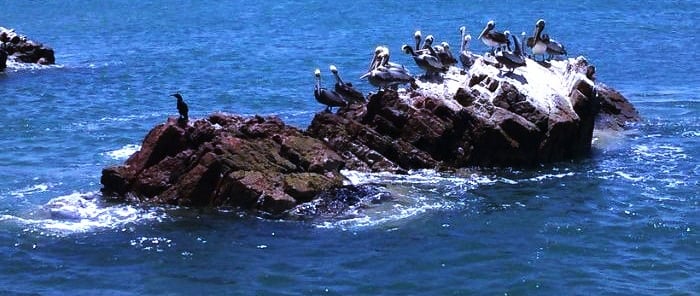Paracas: History, Mystery, and Nature on Peru’s Coast
Javier Fernández
10/25/20243 min leer


Paracas: History, Mystery, and Nature on Peru’s Coast
Introduction
Paracas is one of the most fascinating destinations on Peru’s southern coast. Known for its unique landscapes and rich history, this place stands out as the home of the enigmatic Paracas culture, renowned for its advanced textile techniques and medical practices. In addition, Paracas offers the impressive Paracas National Reserve and the iconic Ballestas Islands, which together create an unforgettable experience for visitors.
The Paracas Culture: A Remarkable Textile and Medical Legacy
The Paracas culture, which flourished between 700 BC and 200 AD, is one of the most enigmatic in the Andean region. They are best known for their Paracas mantles, fine textiles made of cotton and camelid wool, with complex designs and vivid colors that reflect their views on life, religion, and nature. These textiles are considered some of the finest examples of pre-Columbian textile art.
Another remarkable aspect of this culture is the practice of cranial trepanations, a surprisingly advanced surgical procedure performed to treat injuries or illnesses. The Paracas also engaged in cranial deformation, suggesting a social hierarchy and symbolism within their society.
The Julio C. Tello Site Museum: Gateway to the Past
To better understand this civilization, a visit to the Julio C. Tello Site Museum is essential. Located at the entrance of the Paracas National Reserve, this museum houses an important collection of artifacts and textiles from the Paracas culture. Among its most notable pieces are the famous mantles and ceramics, offering a close look at the complexity of their weaving and the iconography of their religious beliefs. The museum also provides detailed information about the funerary practices of this ancient civilization, with exhibits showcasing their funerary bundles.
The Enigma of the Candelabra
One of Paracas’ greatest mysteries is the Paracas Candelabra, a giant geoglyph carved into a hillside extending toward the ocean. Its well-defined lines and imposing size have sparked numerous theories about its origin and purpose. Some believe it served as a navigational marker for ancient sailors, while others link it to religious rituals or astronomical practices.
Paracas Burial Grounds and Their Vision of the Afterlife
The ancient Paracas people had a distinct vision of the afterlife, as reflected in their burial grounds. Bodies were carefully wrapped in funerary bundles with finely woven mantles and accompanied by items the deceased would need in the afterlife. These discoveries provide valuable insight into their beliefs and funerary customs.
Exhibits in Lima: A Glimpse into the Past at the National Museum of Archaeology, Anthropology, and History of Peru
Many significant pieces from the Paracas culture can also be admired at the National Museum of Archaeology, Anthropology, and History of Peru in Lima. This museum holds one of the most extensive collections of Paracas textiles, along with ceramics and ritual objects. The rooms dedicated to this culture showcase the mastery of their weaving and the sophistication of their religious and social practices, offering an enriching educational experience for those who wish to delve deeper into Peru’s pre-Columbian history.
Paracas National Reserve: A Wildlife Sanctuary
The Paracas National Reserve not only preserves the remains of the ancient culture but is also a natural sanctuary that hosts rich biodiversity. With red sand beaches, impressive cliffs, and abundant marine wildlife, the reserve is the perfect place to experience nature in its fullest expression. It is home to various species, such as sea lions, Humboldt penguins, flamingos, and guano birds.
Ballestas Islands: A Close Encounter with Nature
Known as “the Peruvian Galápagos,” the Ballestas Islands are one of Paracas’ most popular attractions. During boat tours, visitors can observe colonies of sea lions resting on the rocks, flocks of guano birds, and, occasionally, dolphins playing in the waters. The tour also offers a close view of the Candelabra, adding an element of mystery to the journey.
Conclusion: A Destination that Combines History and Nature
Paracas offers a unique blend of ancient history, biodiversity, and stunning landscapes. Visiting this destination means exploring the legacy of the Paracas culture, discovering the mystery of the Candelabra, and enjoying the natural beauty of its reserve and islands. Additionally, the opportunity to visit museums in Paracas and Lima allows for a deeper connection with Peru’s pre-Columbian past. Without a doubt, Paracas is a place that invites exploration, discovery, and wonder.
